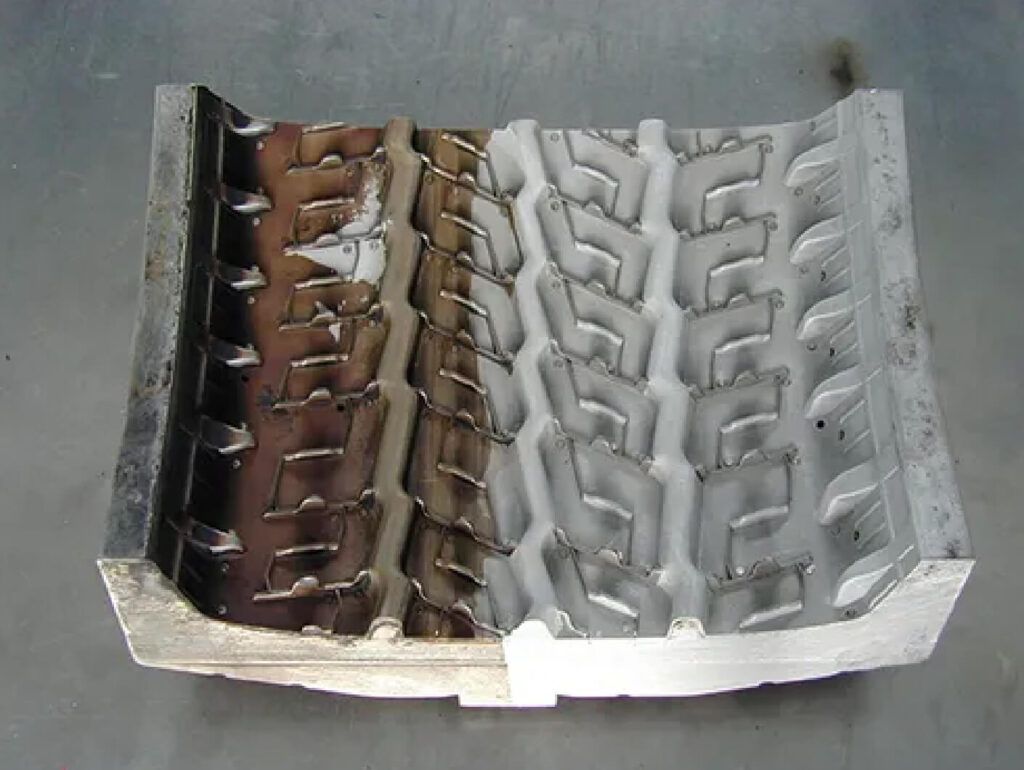Molds are essential to industries like injection molding, rubber production, tire manufacturing, and die-casting. But over time, molds accumulate residue, release agents, carbonized material, and rust, which affect product quality and reduce mold lifespan.
Traditional cleaning methods—sandblasting, chemical soaking, or ultrasonic baths—are time-consuming, abrasive, and can damage the mold surface. That’s why more manufacturers are switching to laser mold cleaning, a non-contact, eco-friendly, and precise cleaning solution.
Here’s how laser cleaning technology works and why it’s the best choice for keeping molds in peak condition.
What Is Laser Mold Cleaning?
Laser mold cleaning uses a high-energy pulsed laser beam to remove surface contaminants like:
- Resin or plastic residue
- Oil and grease
- Rust and oxidation
- Carbon deposits
- Parting agents or powder buildup
The laser beam targets only the unwanted layer, leaving the base metal untouched. This is achieved through laser ablation, where the contaminant absorbs the laser energy, vaporizes, or is lifted off by micro-explosions.
Key Benefits of Laser Mold Cleaning
- No Damage to the Mold
Laser cleaning is non-abrasive, so it doesn’t erode or pit delicate surfaces, unlike sandblasting. - Chemical-Free & Eco-Friendly
No solvents, acids, or detergents are needed—just clean energy and light. - Minimal Downtime
Cleaning can be done in-place without disassembling molds, reducing downtime and labor. - Highly Precise
Remove only the dirt layer, not the substrate. Perfect for complex geometries and micro-engraved areas. - Long-Term Savings
No consumables, reduced mold wear, and lower labor costs.
Industries That Use Laser Mold Cleaning
- Plastic Injection Molding: Clean molds without removing from machines
- Rubber and Tire Industry: Remove vulcanized buildup without damaging mold textures
- Food and Medical Packaging: Ensure hygienic cleaning with zero chemicals
- Die-Casting: Remove oxidation and flux from casting dies
How the Cleaning Process Works
- Set Parameters: Choose power, frequency, and scan speed based on contamination.
- Scan Surface: Direct the laser head over the mold surface in a controlled pattern.
- Ablation Begins: Contaminants absorb the laser energy and disintegrate or evaporate.
- Residue Removal: Some systems include suction or air-blowing for collecting dust.
Types of Mold Contaminants Removed
- Burnt plastics and polymers
- Silicone and waxes
- Grease and carbonization
- Surface oxidation
- Release agent films
Machine Features to Look For
- Adjustable Laser Settings: To handle different materials and dirt levels
- Handheld or Robotic Arm: For flexibility in manual or automated cleaning
- Air-Cooled or Water-Cooled: Depending on power level and usage frequency
- Fume Extraction: Protect workers and ensure clean operation
- Portability: Some models are compact and can be wheeled to the machine
Why It’s Better Than Traditional Cleaning
| Feature | Laser Cleaning | Chemical Cleaning | Sandblasting |
| Mold Damage | None | Possible | Moderate |
| Downtime | Minimal | High | High |
| Environment | Clean | Polluting | Dusty |
| Safety | High | Low | Medium |
| Cost Long-Term | Low | High | Medium |
Conclusion: Cleaner Molds, Better Products
A dirty mold means poor part quality, short mold life, and unnecessary rework. Laser mold cleaning helps you avoid all that. It’s fast, reliable, and saves both time and money—without compromising on safety or performance.

